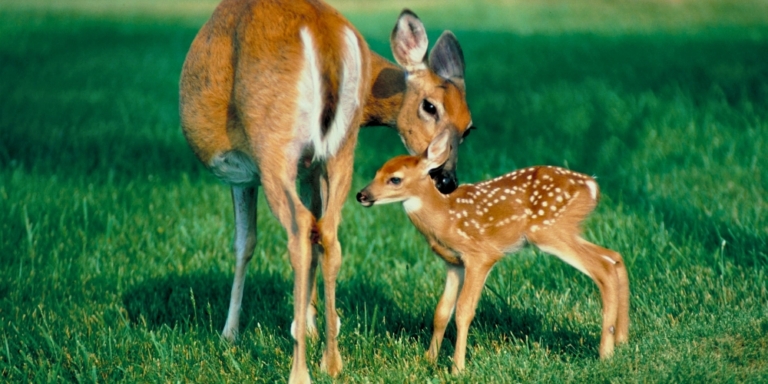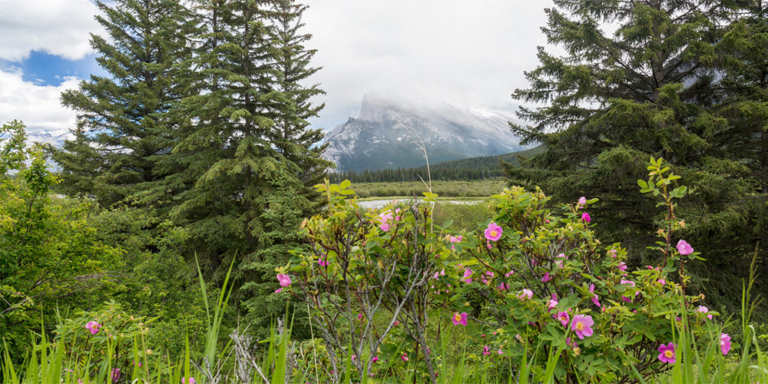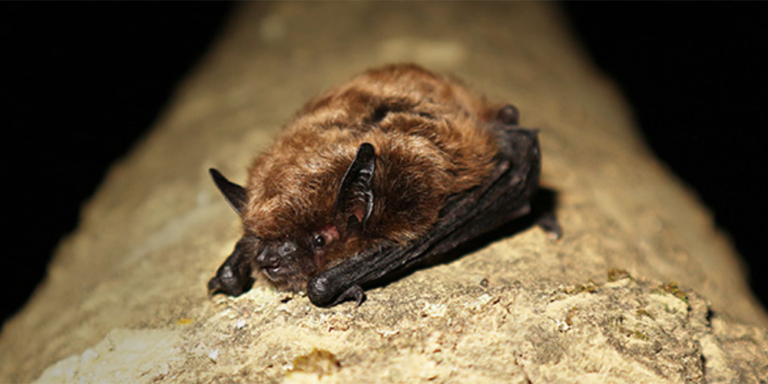A lynx and her two kittens are the latest guests at Lake Louise Ski Resort, where the beautiful felines have made the ski hill their home.
The wild family has surprised skiers, with many stopping to watch the spectacular animals.
But the lynxes, on the other hand, seem to be quite unphased by the crowds.
Last month, the Lake Louise Ski Club had a close run-in with the big cats when the animals decided to cross the ski hill as the club was training!
“The lynx family has been seen all over the resort; however, we aren’t sure if it’s multiple families or the same family,” Leigha Stankewich, the ski hill’s Marketing & Communications Manager, told the Rocky Mountain Outlook.
The lynxes have become celebrities on the ski hill, but it’s important to remember that lynx sightings are usually quite rare.
Lynx are solitary animals that typically hunt during the night and travel alone.
So why are a lynx mother and her kittens out and about during the day?
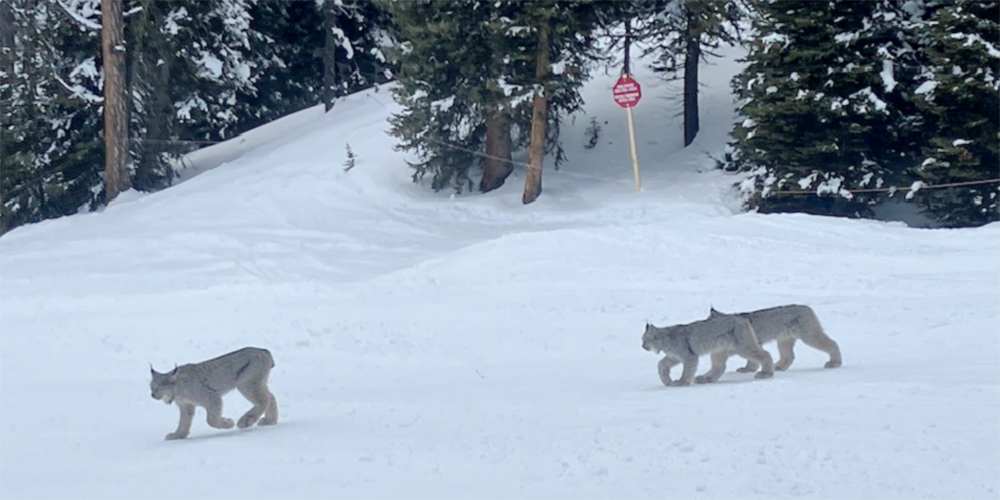

Quite The Appetite


A study titled Lynx Ecology in the Southern Canadian Rocky Mountains might have some answers.
The study by Clayton D. Apps, Alan Dibb, and Anna J. Fontana collected data from ten lynxes.
The lynxes were radio-collared, monitored, and snow-tracked from November 1996 to October 1998.
Researchers studied the animals in a 3,000 square kilometre area, including Kootenay, Banff, and Yoho National Parks.
One of the study’s most important findings was a difference between lynx populations in the north and lynx populations in the south part of their range.
Researchers found that lynxes in the south produce litter sizes of two or fewer kittens.
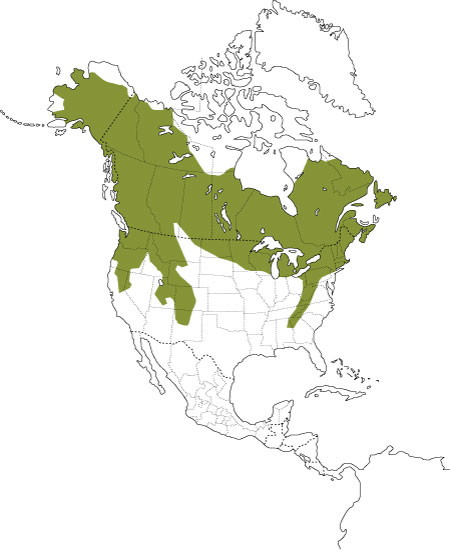

On the other paw, lynxes in the north birthed up to five kittens.
A bit of a shocking anomaly at first glance, but there’s a relatively simple explanation for the variance.
It all comes down to the population of snowshoe hares in the north versus the south.
Lynxes have diverse appetites, but hares comprise about half of the predators’ diets.
In the North, there are many more hares to eat, resulting in healthier cats!
Aside from hares, lynxes have an appetite for red squirrels, northern flying squirrels, grouse, martens, and voles.
While lynxes mostly consume small mammals, they are skilled hunters capable of taking down deer-sized animals.
But hares, in particular, play an important role in lynx populations.
A Place To Call Home
Charlie McLellan is Parks Canada’s acting Wildlife Management Specialist for the Yoho, Lake Louise, and Kootenay field units.
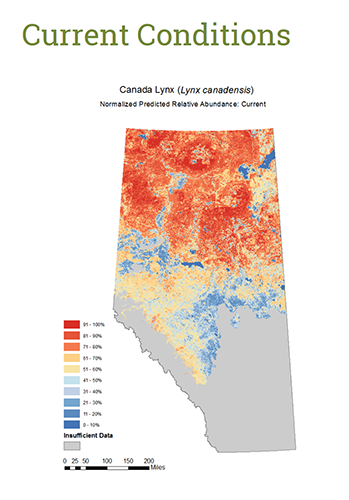

He claims the lynx population in the north rapidly increases during years of peak hare population growth.
“The research shows that compared to the lynx up north, the snowshoe hare (in the south) tend to have more stable populations, so they don’t have such a big cyclical pulse,” explains McLellan.
A cyclical pulse refers to a recurrent surge in hare populations. Unlike the north, the hare population in the south does not experience a cyclical pulse.
As a result, the lynx population in the north is much denser than in the south, where lynx populations are more spread out.
But Lake Louise is a hot spot for southern lynx. The study found that three adult lynx home ranges overlapped in the area.
McLellan thinks the lynx family on the Lake Louise ski hill have made the area their home range, likely due to the presence of prey animals, including some snowshoe hare.
“Some of the open edge habitat, with the runs and then the forest, might provide some good hunting opportunities and some good foraging,” explained McLellan.
However, lynx home ranges are quite large, increasing to about 40 square kilometres where hare populations are low.
The Lake Louise Ski Resort is about 17 square kilometres and likely makes up a small part of the female lynx’s home range.
The mother lynx and her kittens will likely only stick around on the ski hill for as long as the hunting remains good.
Keep Your Distance
While our furry friends are guests at the Lake Louise Ski Resort, we must remember that lynx are wild animals and should be treated as such.
Stankewich reminds skiers to keep at least 100 metres away from the lynx family and report any sightings to the nearest lift attendant.
“The lift attendants do keep a report of wildlife sightings and these are given to our enviro team,” said Stankewich.


Lynx sightings are rare, but McLellan reminds photographers not to surround or crowd the animals and use a telephoto lens when possible to take photos from a distance.
But the most important rule is not to feed the lynx human food. Feeding wildlife non-natural foods increases the likelihood of food-conditioning.
A food-conditioned animal will lose its natural fear of humans and return to locations where it was fed, which can lead to dangerous human-wildlife encounters.
Thankfully, McLellan claims no evidence of humans feeding the lynxes on the skill hill.
Because the lynx population in the south is less dense, it is more vulnerable to habitat loss caused by human development and extreme weather events, like wildfires.
Improper management of our province’s southern lynx population could lead to its destruction.
The skiers at the Lake Louise Ski Resort are doing their part to protect the lynx family and promote the conservation of lynxes in their natural habitat.



